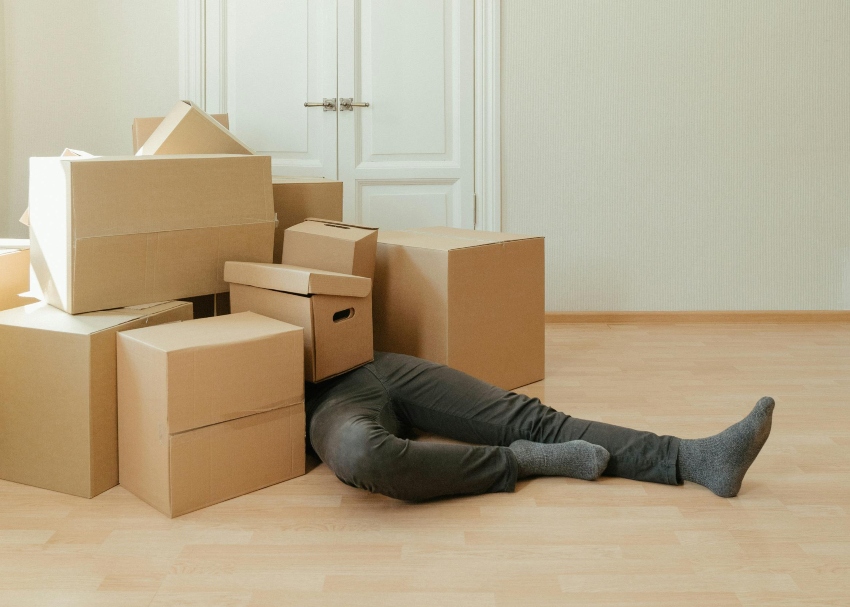
Ladders are indispensable tools used across various industries and in domestic everyday tasks, allowing us to reach heights and complete tasks efficiently. However, despite their utility, working at height on a ladder can post significant risks if not approached with care.
Understanding the most common ladder accidents is crucial for ensuring safety on the job. Let’s explore some of the typical ladder accidents encountered in the UK and essential tips for preventing them.
If you’d like to read more statistics about accidents surrounding falls from height in the UK, check out our blog post How Many People Fall Off Ladders Each Year?
Common Ladder Accidents
1) Ladder Tipping Over
One of the most frequent ladder accidents occurs when the ladder tips over due to improper placement or user error. This often happens when the user leans too far to one side or reaches beyond the ladders capacity, causing it to become unbalanced and fall.
2) Slipping on Rungs
Another common accident involves slipping on the ladder’s rungs, especially when they are wet, oily, or slippery due to debris or other substances. Inadequate footwear or careless climbing techniques can exacerbate the risk of slipping and falling from the ladder.
3) Ladder Slipping
Failure to secure the ladder properly before use can result in it slipping or sliding out of position while in use. This can occur on uneven or unstable surfaces, leading to a loss of stability and potential falls.
4) Electrical Accidents
Using a metal ladder near electrical hazards can result in electrocution if the ladder makes contact with live wires or electrical equipment. Failure to use non-conductive ladders, such as fiberglass ladders, in proximity to electrical sources can have serious consequences.
5) Missing or Damaged Ladder Components
Ladders that are missing rungs, steps, or safety features, or those with damaged or weakened components, pose a significant safety risk to users. Insufficient maintenance, wear and tear, or improper storage can contribute to the deterioration of ladder integrity over time.
*
While ladders are great tools for a wide range of tasks, like any tools when working at height, it’s important to make sure you’re using them safely. Here are some top tips for staying safe when using a ladder.
- Choose the right ladder: select the appropriate ladder for the task at hand, considering factors such as height, weight capacity, and material. Ensure that the ladder is in good condition and free from defects or damage.
- Inspect before use: Before using the ladder, inspect it for any signs of damage, wear, or defects. Check for missing or loose rungs, bent or damaged components, and stability.
- Secure the ladder: Always secure the ladder properly before climbing, ensuring that it is placed on a stable, level surface and that any locking mechanisms or stabilisers are engaged.
- Maintain three points of contact: One of the cardinal rules of ladder safety – when climbing or descending the ladder, maintain three points of contact at all times to maximise stability and minimise the risk of falls.
- Avoid over reaching: Keep your body centred between the ladder rails and avoid overreaching to the side or leaning too far forwards. If you cannot reach your work comfortably, descend the ladder and reposition it closer to your task.
- Follow manufacturers guidelines: Adhere to the manufacturers instructions and safety guidelines for the specific ladder you are using, including weight limits, maximum height, and recommended usage.
Read more: Ladder Safety Tips
By understanding the most common ladder accidents and following these essential safety tips, you can help prevent injuries and ensure a safe working environment when using ladders. Prioritising safety and taking proactive measures when working at height is key to avoiding accidents and promoting safety. Remember, it’s better to take the time to use a ladder safely than to risk a potentially serious injury due to carelessness or haste.
Here at Ladders UK Direct, we provide an impressive selection of premium quality ladders in a range of materials and designs, so you’re sure to find a ladder suited to your needs from our collection. Whether you’re looking for a more casual ladder for DIY tasks around the home, or a more heavy-duty ladder for trade work, you can find what you’re looking for with Ladders UK Direct.
Browse Ladders
Read More: Ladder Safety Infographic

 Ladders
Ladders  Step Ladders
Step Ladders  Loft Ladders
Loft Ladders  Scaffold Towers
Scaffold Towers 








